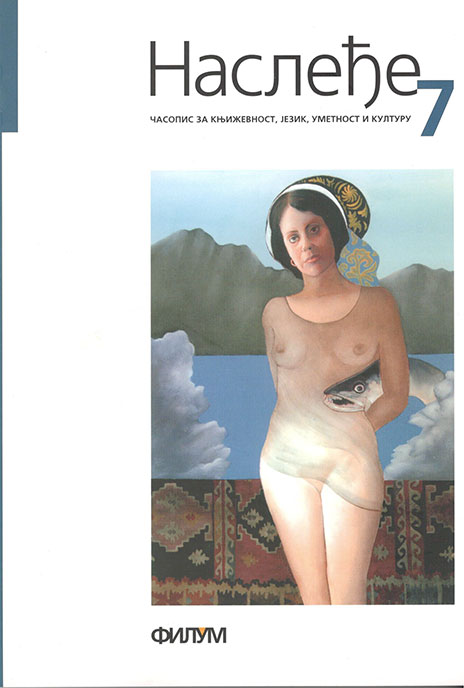THE USE OF PARALLEL QUOTATION IN THE IN TERPRETATION OF LITERARY TEXTS
Keywords:
цитат, напоредни цитат, метода упоредних одломака, тумачење, текст, језичка култура, интертекстуалност, мултимедијалностAbstract
In this paper the attention is directed to the contents of the notion of “parallel quotation“ and to the discussion of the modern theory that has given form to the hermeneutic function of “comparable fragments.“ By the summary survey, this model is put in the position of the initial process of thinking, as a method which has been applied – more often than currently believed – in the language of culture. This investigation is based on the diachronic development of the concept known in the theory of literature as a “quotation,“ including the value judgements of its typology. The theoretical studies by Antoine Compagnon and Dubravka Oraić Tolić have
been used in discussing the theoretical contributions to the interpretation both of literary and of scientific texts. From the point of view of the theory of literature, it has been pointed to the importance of the chain of reasoning in the context of modern ways of interpretation, by using modern theoretical thought which supplies greater freedom of approach to the language of culture, which has arisen as a result of the phenomenon of intertextuality. Special attention is paid to the difference from the currently known forms of quotations, and to the possibility of application of this model of parallel quotation during the process of investigation both in the reading and/or interpreting the literary and the scientific texts. This paper points out the models which support the possibilities of the use of parallel quotations as well as the method which defines more closely the technique of writing and quoting different opinions phrased in the identical set of words within the relevant sentence.
References
Дубравка Ораић Толић, Теорија цитатности, Загреб, 1990.
Антоан Компањон, Демон теорије, Нови Сад, 2001.
Војислав Ђурић,Говор поезије, Београд, 1966.
Пол де Ман, Читање као повратак филологији, превод Новице Милића,текст са интернет странице.
Б. В. Томашевски, Теорија књижевности, Београд, 1972.
Волфанг Кајзер, Језичко уметничко дело, Београд, 1973.
Ј. М. Лотман, Структура уметничког текста, Београд, 1976.
Радмила Маринковић, Светородна господа српска, Београд, 1998.






